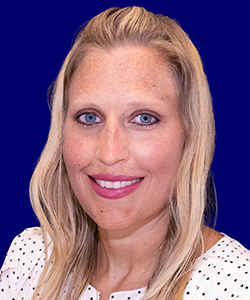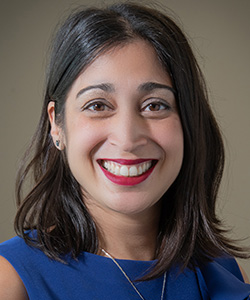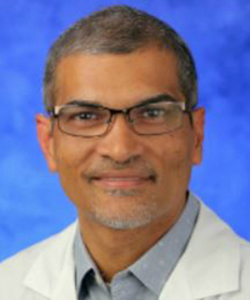April 12, 2022, 7:00-8:00 pm ET
Live Webinar & Acute Pain/Regional Anesthesia Hot Topics Installment for April
Registration is now closed.
- How I Do It: Sonoanatomy of the Non-obese and Obese Spine – Vivian Ip, MBChB, FRCA
- The Secrets of My Success: Neuraxial Ultrasound in the Difficult Spine – Sharon Peacock, MD
- Tips and Tricks for Successful Paravertebral Blocks – Sanjib Adhikary, MD
- Q&A
Webinar recording is available to ASRA Pain Medicine members and registrants of the event. Email asrameetings@asra.com for assistance.
Register
Program
- Welcome and introductions – Jaime Baratta, MD, Moderator
- How I Do It: Sonoanatomy of the Non-Obese and Obese Spine – Vivian Ip, MBChB, FRCA
- The Secrets of My Success: Neuraxial Ultrasound in the Difficult Spine – Sharon Peacock, MD
- Tips and Tricks for Successful Paravertebral Blocks – Sanjib Adhikary, MD
- Q&A
Faculty
Scientific/Education Planning Committee:
Andrea Chadwick, MD; University of Kansas School of Medicine, Leawood, KS
Ki-Jinn Chin, MBBS, FANZC, FRCPC; Toronto Western Hospital, Toronto, Ontario
Steven Cohen, MD; Johns Hopkins & Walter
Reed, Clarksville, MD
Samer Narouze, MD, PhD; Western Reserve Hospital,
Cuyahoga Falls, OH
Faculty:

Jaime Baratta, MD, is an associate professor of anesthesiology and director of regional anesthesia as well as the director of the regional anesthesia and acute pain fellowship in the department of anesthesiology at Thomas Jefferson University in Philadelphia, PA. She received her medical degree from Jefferson Medical College. After serving five years as a medical officer in the United States Navy, she completed her residency and fellowship at Thomas Jefferson University. She is the vice-chair of the ASRA Wellness Special Interest Group, serves on the ASRA Faculty Development Committee, and serves as the regional anesthesia faculty advisor on the ASRA Resident Section Committee.

Vivian Ip, MBChB MRCP FRCA, is an associate clinical professor of anesthesia at the University of Alberta Hospital in Edmonton, Canada. She is the director of the ambulatory regional anesthesia program at the U of A Hospital. She received her anesthesia training in London, UK. Subsequently, she undertook two fellowships in Canada: regional anesthesia and acute pain management, and ambulatory anesthesia. She is the chair of the green anesthesia SIG in ASRA Pain Medicine and the consulting member for the ASRA Newsletter Committee. She previously served as the associate editor of the acute pain section for the ASRA Newsletter Committee and in the ASRA Research Committee. She is active in research and her research interests include regional nerve block catheters, airway, and green anesthesia.

Sharon Peacock, MD, obtained her bachelor of health sciences in physical therapy from McGill University (2002) and her doctor of medicine from Queen’s University (2011). She completed her anesthesia residency at the University of Toronto and her fellowship training included a regional anesthesia fellowship at Sunnybrook and advanced clinical fellowship at Sinai. She is currently an assistant professor at the University of Toronto, and her clinical interests include regional anesthesia, point-of-care ultrasound, and medical education.

Sanjib Adhikary, MD, is an anesthesiologist with fellowship training in regional anesthesia and neuroanesthesia. He deals with regional anesthesia procedures for acute pain management almost daily in his clinical practice. He teaches ultrasound guided regional anesthesia to residents and faculty regularly as a part of his daily job. Since 2009 he has been an instructor for advanced ultrasound guided regional anesthesia workshops at American Society of Regional Anesthesia meetings and Canadian Anesthesia Society annual meetings.
CME-CPD
To receive your CME certificate
- Download the Credit Claim Form.
- Indicate the number of hours you attended (credit will be verified against registration).
- Send the completed form to asrameetings@asra.com.
- Your certificate will be emailed to you within 1 week.
Educational Objectives
After participating in this educational activity, participants should be able to:
- Identify relevant sonoanatomy of the non-obese and obese spine.
- Discuss situations where neuraxial sonoanatomy would be helpful and what barriers exist to its regular usage during neuraxial placement.
- Identify the anatomy and sonoanatomy of the challenging spine including scoliosis and spine hardware.
- Discuss alternative approaches to neuraxial analgesia including paravertebral and describe the anatomy and sonoanatomy of a paravertebral block.
Target Audience
The ASRA Pain Medicine CME program provides educational activities to physicians, residents, fellows, nurse practitioners, medical students, anesthesia assistants, respiratory therapists, hospital procurement personnel, and operating room managers. ASRA Pain Medicine supports an interdisciplinary and interprofessional approach to continuing education and patient care by also providing relevant education for other healthcare professionals not directly engaging in interventional regional anesthesia and/or pain medicine procedures. ASRA Pain Medicine offers learning opportunities to the national and international healthcare community.
Accreditation and credit designation statements
Credits by Day | Maximum |
| April 12, 2022 | 1.00 |
| Total Credits: | 1.00 |
Physicians
The American Society of Regional Anesthesia and Pain Medicine is accredited by the Accreditation Council for Continuing Medical Education (ACCME) to provide continuing medical education for physicians.
The American Society of Regional Anesthesia and Pain Medicine designates this an internet live course for a maximum of 1.00 AMA PRA Category 1 Credits.™ Physicians should claim only the credit commensurate with the extent of their participation in the activity.
PAs (Physicians Assistants): AAPA accepts certificates of participation for educational activities certified for AMA PRA Category 1 Credit™ from organizations accredited by ACCME or a recognized state medical society. Physician assistants may receive a maximum of 1.00 hours of Category 1 credit for completing this program.
Nurse Practitioners: The American Association of Nurse Practitioners (AANP) accepts AMA PRA Category 1 Credits™ from organizations accredited by the ACCME. This activity has been approved for a maximum of 1.00 AMA PRA Category 1 Credits.™
Registered Nurses: Regulations dictate that only physicians may earn CME credits; however, many state Boards of Registered Nursing accept AMA PRA Category 1 Credits™ from organizations accredited by the ACCME. Attendees are responsible for confirming their specific board’s acceptance of ASRA Pain Medicine-provided credits. This activity has been approved for a maximum of 1.00 AMA PRA Category 1 Credits.™
The American Board of Anesthesiology® MOCA®1
Credit Reporting to the ABA: ASRA Pain Medicine is an ABA-approved provider and, as a service to ASRA Pain Medicine members and participants, CME credits are reported to the ABA. Participants must include their correctly formatted ABA ID number (34567890) during the online evaluation and credit claim process available at the conclusion of the activity. Once the online evaluation and credit claim process is closed, certificates will be issued and credits reported to the ABA. After this time, participants may request their CME certificate by contacting asrameetings@asra.com, but ASRA Pain Medicine will no longer report credits to the ABA, which will then be the individual participant’s responsibility.
International credits
Royal College of Physicians and Surgeons of Canada: The Royal College of Physicians and Surgeons of Canada has agreements based on the mutual recognition of credit points with the American Medical Association for live educational events. You may submit your CME certificate directly for credit recognition of this accredited group learning activity (Section 1) as defined by the Maintenance of Certification program of The Royal College of Physicians and Surgeons of Canada. For more information, visit: www.royalcollege.ca
European Accreditation Council for Continuing Medical Education (UEMS-EACCME): The UEMS-EACCME has agreements based on the mutual recognition of credit points with the American Medical Association for live educational events. Each medical specialist should claim only those hours of credit that he/she actually spent in the educational activity. The EACCME is an institution of the European Union of Medical Specialists (UEMS): www.uems.net
Disclosure and mitigation of personal conflicts of interest
View all faculty disclosures. In accordance with the ACCME’s Standards for Integrity and Independence and related policies, ASRA Pain Medicine is committed to ensuring balance, independence, objectivity, and scientific rigor in its continuing medical education and continuing professional development activities. Those in control of the educational content disclose all relationships (financial or other) with any ineligible company that they have had within the past 24 months. If an individual refuses to disclose, they are disqualified from participating. Disclosure information is evaluated to determine relevance and conflicts of interest mitigated. Disclosure of all relevant financial relationships is made to participants prior to the activity. Participants are asked to evaluate the objectivity and independence. Off-label or investigational use of a therapeutic product also is disclosed.
Check Out These Upcoming Programs
-
Apr16
-
Jan31